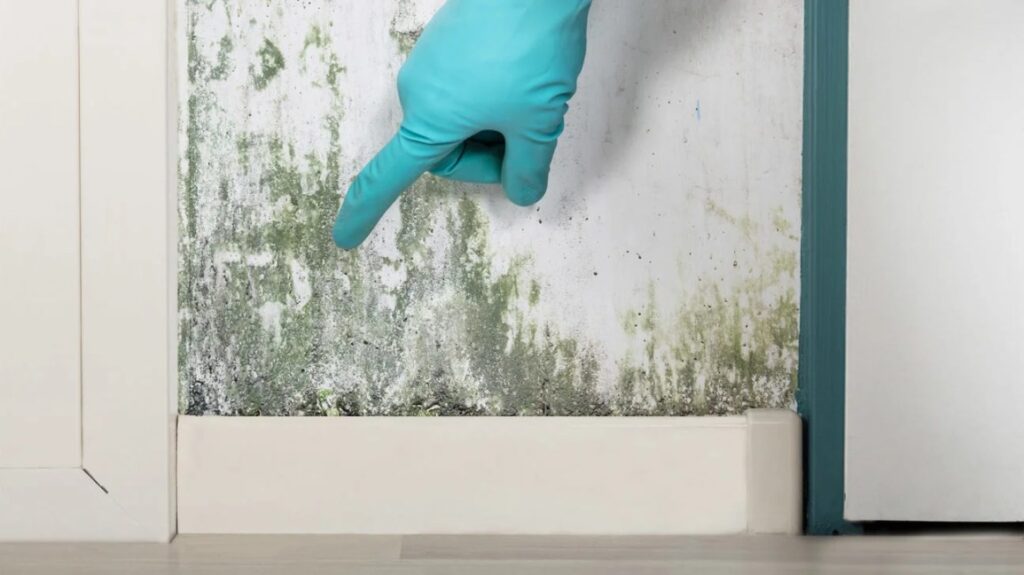In this article, we will discuss the potential health risks that may be associated with mold exposure in Garland, TX homes. You will learn about the health effects of mold, common symptoms, and who may be more susceptible. Additionally, we will provide tips on how to prevent mold growth and how to properly deal with it if it is already present in your home. By the end of this article, you will have a better understanding of the potential dangers of mold and how to ensure the safety of your family.
What is mold?
Definition of mold
Mold refers to a type of fungus that can grow and thrive in various environments, including both indoor and outdoor spaces. It reproduces by releasing spores into the air, which can be harmful to human health when inhaled or touched. Mold is commonly found in moist or damp areas and can spread quickly if not properly addressed.
Types of mold
There are several types of mold that can be found in homes, each with varying levels of toxicity. Some common types include:
-
Stachybotrys chartarum (black mold) – This type of mold is known for its dark green or black color. It produces mycotoxins that can cause severe health problems.
-
Penicillium – Penicillium can be found in damp areas, such as basements or bathrooms. It can cause allergic reactions and respiratory issues.
-
Aspergillus – Aspergillus is a common type of mold that can grow on walls, floors, and ceilings. It can cause allergies, infections, and asthma exacerbation.
-
Cladosporium – Cladosporium is a type of mold commonly found in damp areas such as showers and basements. It can cause respiratory issues and skin irritations.
Where mold can be found in homes
Mold can thrive in various areas of a home that have high moisture levels or poor ventilation. Some common areas where mold can be found include:
-
Bathrooms: Mold can grow on bathroom tiles, shower curtains, and grout lines.
-
Basements: Damp basements are ideal breeding grounds for mold.
-
Attics: Poor ventilation and leaks in the roof can lead to mold growth in attics.
-
Kitchens: Mold can grow on wet or damp surfaces in the kitchen, such as under the sink or near the dishwasher.
-
Laundry rooms: Moisture from washing machines can lead to mold growth in laundry rooms.
-
Crawl spaces: Poor ventilation and high humidity levels in crawl spaces can promote mold growth.
Health risks of mold exposure
Exposure to mold can pose significant health risks, especially for individuals with allergies, respiratory conditions, or weakened immune systems. The following are some of the health problems associated with mold exposure.
Respiratory problems
Inhaling mold spores can lead to respiratory problems such as coughing, wheezing, and difficulty breathing. Individuals with pre-existing respiratory conditions, such as asthma or chronic obstructive pulmonary disease (COPD), may experience worsened symptoms when exposed to mold.
Allergic reactions
Many people are allergic to mold, and exposure can trigger allergic reactions such as sneezing, itching, and watery eyes. These symptoms can be particularly severe for individuals with a hypersensitivity to mold.
Asthma exacerbation
Mold can act as a potent asthma trigger, causing asthma symptoms to worsen in individuals with the condition. It can lead to increased episodes of wheezing, coughing, chest tightness, and difficulty breathing.
Infections and immune system disorders
Certain types of mold, such as Aspergillus, can cause infections in individuals with weakened immune systems. This is especially true for those undergoing chemotherapy, organ transplant recipients, or people with HIV/AIDS.

Effects of mold on specific populations
While mold exposure can be harmful to anyone, certain populations may be more susceptible to its effects.
Children
Children, especially infants, are more vulnerable to the health risks of mold exposure. Their immune systems are still developing, and they tend to spend more time indoors, increasing their chances of coming into contact with mold.
Elderly
Elderly individuals may have weakened immune systems, making them more susceptible to the health effects of mold exposure. They may also have existing respiratory conditions or other underlying health issues, which can be exacerbated by mold.
Pregnant women
Pregnant women should be cautious about mold exposure as it can potentially harm the fetus. There is evidence to suggest that mold exposure during pregnancy may increase the risk of complications such as preterm birth and low birth weight.
Individuals with weakened immune systems
People with weakened immune systems, such as those with HIV/AIDS or undergoing immunosuppressive therapy, are at a higher risk of developing infections caused by mold exposure. Prompt remediation and prevention measures are crucial for their health and well-being.
Symptoms of mold exposure
Mold exposure can manifest in various symptoms, depending on the individual and the extent of exposure. The following are common symptoms associated with mold exposure:
Coughing and wheezing
Persistent coughing and wheezing are common respiratory symptoms of mold exposure. These symptoms can be particularly severe in individuals with asthma or other respiratory conditions.
Nasal congestion
Mold spores in the air can lead to nasal congestion, stuffy or runny nose, and sinus pressure. This can cause discomfort and difficulty breathing through the nose.
Sore throat
Exposure to mold can also result in a sore throat and irritation of the throat and airways. This may be accompanied by coughing and a scratchy sensation in the throat.
Skin irritations
Direct contact with mold or mold-infested materials can trigger skin irritations such as rashes, redness, or itching. This is more common in individuals with sensitive skin.
Headaches
Some individuals may experience headaches and migraines as a result of mold exposure. These headaches can be persistent and may be accompanied by fatigue or dizziness.

Testing for mold in Garland TX homes
If you suspect mold in your Garland TX home, it is essential to have it tested to determine the type and extent of the mold problem. There are two main options for mold testing: professional mold testing services and do-it-yourself (DIY) mold test kits.
Professional mold testing services
Hiring a professional mold testing service is the most accurate way to determine the presence of mold in your home. These professionals have the necessary expertise and equipment to collect samples, analyze them, and provide a detailed report of the mold species and concentration levels.
DIY mold test kits
Alternatively, you can choose to use DIY mold test kits. These kits typically involve taking surface or air samples and sending them to a laboratory for analysis. While these kits may provide some information about the presence of mold, they are often less accurate than professional testing services.
Prevention and control of mold
Preventing mold growth in the first place is the best approach to protect your health and your home. The following measures can help in preventing and controlling mold:
Proper ventilation
Ensure that your home has proper ventilation in areas prone to moisture, such as bathrooms, kitchens, and basements. Install exhaust fans and keep windows open to promote air circulation.
Reducing moisture levels
Keep moisture levels in your home under control by promptly addressing any water leaks, using dehumidifiers in damp areas, and ensuring proper drainage around your home’s foundation.
Regular cleaning and maintenance
Regularly clean and inspect your home for signs of moisture or mold growth. Clean and dry any wet or damp areas promptly, and remove any visible mold with appropriate cleaning solutions.

Hiring professional mold remediation services
If you discover mold in your Garland TX home, it is crucial to hire professional mold remediation services for its safe and effective removal. Professional mold remediation offers various benefits.
Benefits of professional mold remediation
-
Expertise: Professionals have the knowledge and experience to safely and effectively remove mold from your home.
-
Proper equipment: Mold remediation companies have specialized equipment and tools to handle mold removal, ensuring the most thorough and efficient process.
-
Prevention of cross-contamination: Professionals can prevent the spread of mold spores to other areas of your home during the remediation process.
Choosing a reputable mold remediation company
When choosing a mold remediation company, it is important to select a reputable and certified company. Look for companies that have experience in mold remediation, proper certifications, and positive customer reviews.
Legal implications of mold in homes
The presence of mold in rental properties or homes can have legal implications for both landlords and tenants. It is crucial for both parties to understand their responsibilities and obligations regarding the prevention and remediation of mold.
Landlord and tenant responsibilities
Landlords are generally responsible for maintaining a safe and habitable living environment for their tenants. This includes addressing mold issues promptly and effectively. However, tenants also have a responsibility to report any signs of mold growth to their landlord as soon as it is detected.
Insurance coverage for mold damage
It is important to review your homeowner’s insurance policy to understand what type of coverage you have for mold-related issues. Some policies may exclude mold coverage altogether, while others may have limitations or specific requirements for coverage.

Steps to take if you suspect mold in your home
If you suspect mold in your Garland TX home, it’s important to take the following steps:
Identifying signs of mold
Look for visible signs of mold, such as discolored patches on walls or ceilings, a musty odor, or any areas that are consistently damp or moist.
Contacting a professional
If you suspect mold, contact a professional mold remediation company for a thorough inspection and testing. They can determine the extent of the mold problem and recommend the appropriate remediation measures.
Temporary measures to minimize exposure
While waiting for professional assistance, you can take temporary measures to minimize your exposure to mold. These include keeping affected areas well-ventilated, using air purifiers with HEPA filters, and wearing personal protective equipment (PPE) such as gloves and masks when in the affected area.
Conclusion
In summary, mold exposure in Garland TX homes can pose significant health risks, particularly for individuals with allergies, respiratory conditions, or weakened immune systems. It is important to be aware of the health effects of mold exposure and take proactive measures to prevent and control mold growth in your home. If you suspect mold, it is advisable to seek professional help to ensure safe and effective removal. Remember, both landlords and tenants have responsibilities when it comes to addressing mold-related issues, and it is important to review your insurance coverage for potential mold damage. By being proactive and taking the necessary steps, you can protect yourself and your family from the potential health risks associated with mold exposure in your home.
